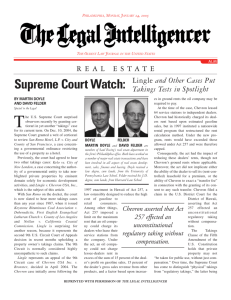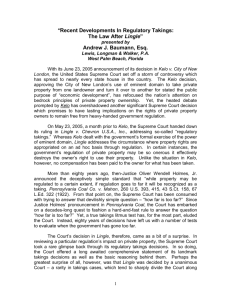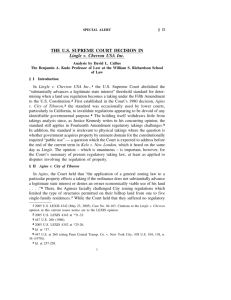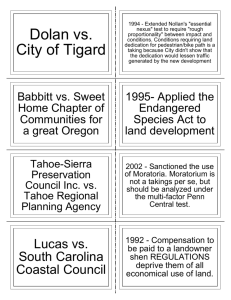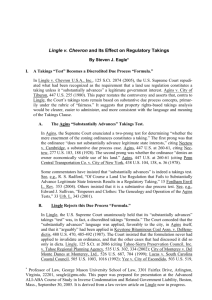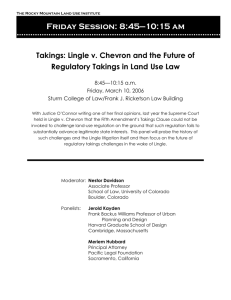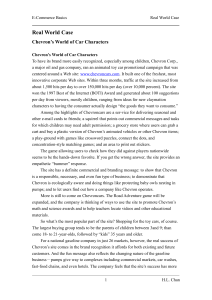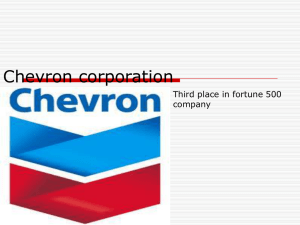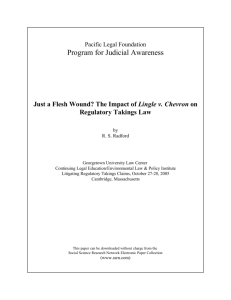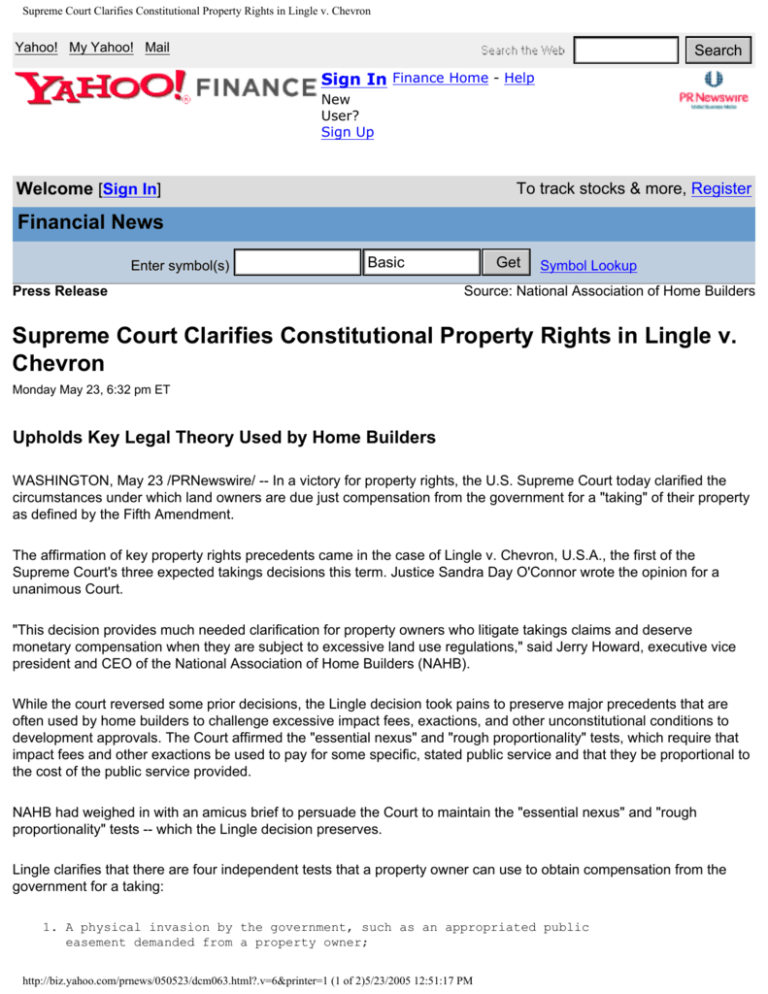
Supreme Court Clarifies Constitutional Property Rights in Lingle v. Chevron
Yahoo! My Yahoo! Mail
Search
Sign In Finance Home - Help
New
User?
Sign Up
Welcome [Sign In]
To track stocks & more, Register
Financial News
Enter symbol(s)
Get
Basic
Press Release
Symbol Lookup
Source: National Association of Home Builders
Supreme Court Clarifies Constitutional Property Rights in Lingle v.
Chevron
Monday May 23, 6:32 pm ET
Upholds Key Legal Theory Used by Home Builders
WASHINGTON, May 23 /PRNewswire/ -- In a victory for property rights, the U.S. Supreme Court today clarified the
circumstances under which land owners are due just compensation from the government for a "taking" of their property
as defined by the Fifth Amendment.
The affirmation of key property rights precedents came in the case of Lingle v. Chevron, U.S.A., the first of the
Supreme Court's three expected takings decisions this term. Justice Sandra Day O'Connor wrote the opinion for a
unanimous Court.
"This decision provides much needed clarification for property owners who litigate takings claims and deserve
monetary compensation when they are subject to excessive land use regulations," said Jerry Howard, executive vice
president and CEO of the National Association of Home Builders (NAHB).
While the court reversed some prior decisions, the Lingle decision took pains to preserve major precedents that are
often used by home builders to challenge excessive impact fees, exactions, and other unconstitutional conditions to
development approvals. The Court affirmed the "essential nexus" and "rough proportionality" tests, which require that
impact fees and other exactions be used to pay for some specific, stated public service and that they be proportional to
the cost of the public service provided.
NAHB had weighed in with an amicus brief to persuade the Court to maintain the "essential nexus" and "rough
proportionality" tests -- which the Lingle decision preserves.
Lingle clarifies that there are four independent tests that a property owner can use to obtain compensation from the
government for a taking:
1. A physical invasion by the government, such as an appropriated public
easement demanded from a property owner;
http://biz.yahoo.com/prnews/050523/dcm063.html?.v=6&printer=1 (1 of 2)5/23/2005 12:51:17 PM
Supreme Court Clarifies Constitutional Property Rights in Lingle v. Chevron
2. A "total," categorical taking where a regulation deprives a property
owner of all economically beneficial uses of property, such as
requiring a parcel to be set aside in its entirety as open space;
3. A balancing analysis, to be conducted where government regulations
restrict the use of property to a degree (but do not eliminate all
uses), that considers the land owner's expectations for investment and
development, and the economic impact of the regulation on the land
owner; and
4. A governmental imposition of unconstitutional conditions for approval
of a development project in exchange for a permit. Under the doctrine
of unconstitutional conditions, "the government may not require a
person to give up a constitutional right - here, the right to receive
just compensation when property is taken for public use - in exchange
for a discretionary benefit (that is, a permit) conferred by the
government where the benefit" is not connected or proportionate to the
condition imposed.
The Lingle decision did remove one test from the takings landscape. In its own past decisions, the Court stated that a
regulation that "fails to substantially advance a legitimate government interest" amounts to a taking. The Court
declared that the "substantially advance" test is no longer appropriate for a takings analysis. However, Justice
O'Connor made clear that a property owner could still assert a due process violation when government fails to advance
its own interests through regulation.
While elimination of the substantially-advance test is not a victory for Chevron, it is the clarification of takings law and
the preservation of the essential-nexus and rough-proportionality tests that is important to the home builders, Howard
said. "The Supreme Court's affirmation of these precedents is a significant victory for property rights."
The facts of Lingle did not concern the uses of real estate. At issue was a Hawaii statute that imposed limits on rents
that oil companies may charge to dealers who lease service stations owned by the companies. Chevron sued for a
taking, arguing that the rent cap statute failed to "substantially advance a legitimate state interest" in controlling retail
prices. Chevron won at the 9th Circuit Court of Appeals.
With the Lingle decision, the Supreme Court reversed the 9th Circuit. Justice O'Connor believed that the "substantially
advance" test is an improper takings test because it does not address the effect of a regulation on property, but rather
solely concerns whether the underlying regulation itself is valid. Because Chevron couched its takings claim under the
substantial advancement theory -- which the Court said is no longer a valid takings test -- the Court dismissed
Chevron's claim.
Source: National Association of Home Builders
Copyright © 2005 Yahoo! Inc. All rights reserved. Privacy Policy - Terms of Service - Copyright Policy - Ad Feedback
Copyright © 2005 PR Newswire. All rights reserved. Republication or redistribution of PRNewswire content is expressly
prohibited without the prior written consent of PRNewswire. PRNewswire shall not be liable for any errors or delays in the
content, or for any actions taken in reliance thereon.
http://biz.yahoo.com/prnews/050523/dcm063.html?.v=6&printer=1 (2 of 2)5/23/2005 12:51:17 PM

